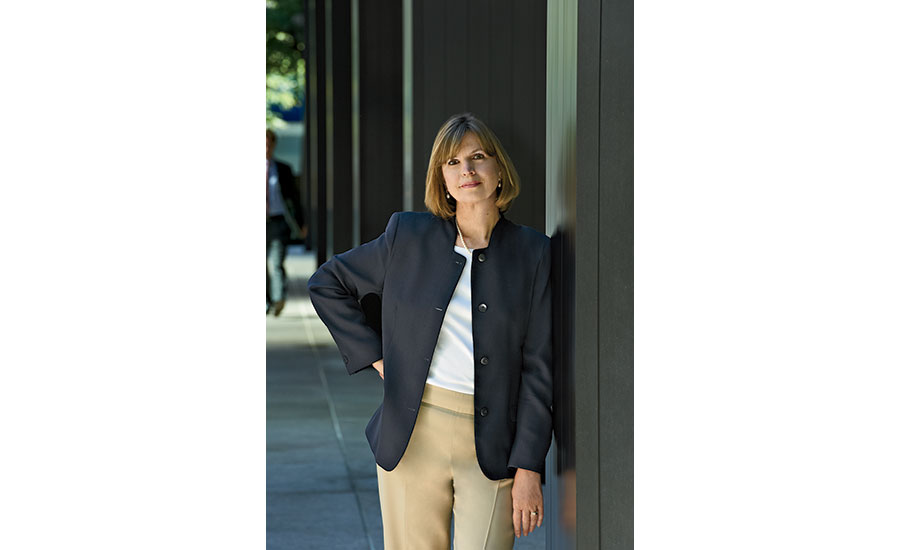It’s a new year, a time for a fresh start. And while we at RECORD like to bring you the newest architectural projects and the latest in design ideas and technology, 2016 is a year in which we’re looking back as well, reflecting on our rich legacy. That’s because Architectural Record turns 125 this year, a longer run than almost any other brand in American publishing. Look for special features in print and online over the coming year.
Founded in 1891 as “the Magazine for Architects and all persons who take an intelligent interest in the design, the construction, and the embellishment of the buildings in which they live,” the quarterly (it went monthly in 1902) arrived at a key moment in American cultural history. Magazines were becoming an immensely popular medium, at the same time that building technology and architecture were rapidly advancing, and modern ideas were capturing the imagination of the public.
The first issue of “The Architectural Record” expressed the broad vision of its editor, Henry Desmond, as Suzanne Stephens points out in an essay on the early years. Desmond, who fancied himself a literary figure, included poetry among articles on plumbing and Romanesque Revival architecture. He assured his readers that he was entering the field with a “serious purpose.” “To amuse the public with Architecture obviously is out of the question,” he declared.
“Not that the art, as practised at present, is without a ludicrous side.” Desmond would later entertain his readers with a regular feature called “Architectural Aberrations” that heaped scathing criticism on buildings the magazine deemed ridiculous. And while he provided an important platform for architectural thinkers—including essays by Frank Lloyd Wright, as well as leading critics—Desmond also continued to look at the wider culture, publishing, for example, the first American report from inside the Paris studio of a young artist named Pablo Picasso, in 1910. In “The Wild Men of Paris,” about the avant-garde art scene, Gelett Burgess described Picasso as “a devil” in the “most complimentary sense”: “I thought of a Yale sophomore who had been out stealing signs, and was on the point of expulsion . . . he is the only one of the crowd with a sense of humor.” RECORD printed Burgess’s remarkable photograph of the artist, sitting in his studio with two African sculptures hanging behind him, two years before he would first publicly exhibit his Cubist painting.
The technology and printing of photography was a special interest of Desmond’s, and RECORD was innovative in its use of photographic images, printing halftones and experimenting with color tinting. While criticism and on-scene reporting has been central to RECORD'S mission since the beginning, the quality of photography has been vital in defining the magazine as the RECORD of the architecture of its time. RECORD even advertised its photographic services to architects and clients, who could hire the magazine to document their buildings, an early ancillary revenue stream.
Now that technology has advanced to the point that the Internet is flooded with photographs of buildings shot by both professionals and anyone with an iPhone6, the editors of RECORD keep a sharp eye on the integrity of the architectural image. It can be easy to be fooled. As one of our contributing editors, Blair Kamin, reported last month in The Chicago Tribune, the architect of a new building, El Centro, won a design award from the Chicago AIA after submitting a photograph of the project that photoshopped out the ungainly air-handling units on the roof. Two of the jurors told Kamin they would not have voted for the award had they seen the undoctored photo.
We do our best to publish accurate photographs in RECORD. Images have been submitted to the magazine that are clearly fake—airbrushed to impossible perfection, with photoshopped people inserted into a project. Once, a photograph arrived of a building that had actually been moved, through the wonders of digitization, from its true location in an upscale area of a foreign city to a poor neighborhood, to promote the idea that it had a socially responsible agenda. While we cannot always visit every project—we were not able to send writers to tour two remote schools in this issue, for example, one in northern Afghanistan and one in the Democratic Republic of Congo—we usually report directly from the major projects we feature in the magazine. That’s one more way we ensure that photography in our pages reflects reality. Like Henry Desmond long ago, we are serious about how we publish the significant architectural achievements of our day. And if we sometimes amuse the reader along the way, that’s okay too.



Post a comment to this article
Report Abusive Comment